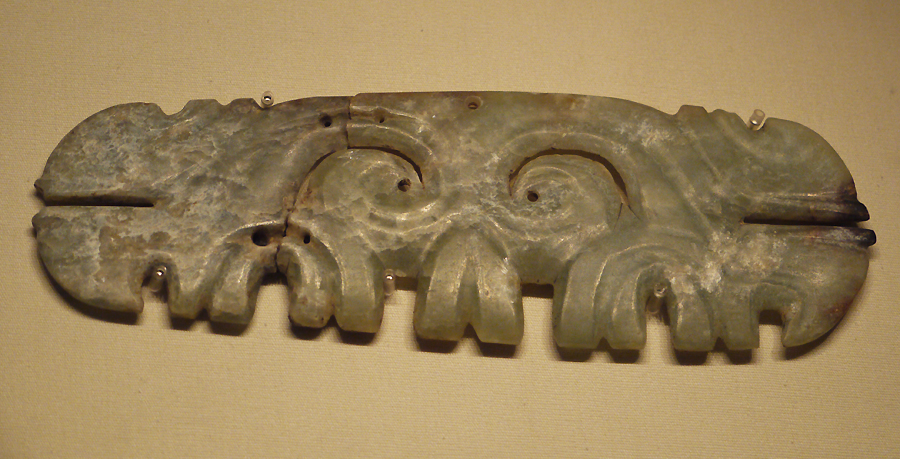Neolithic archaeology sheds light on origins of Chinese civilization

The picture shows a jade plaque with animal mask desgin of the Hongshan Culture (ca. 4700-2900 BCE), which was unearthed at Niuheliang in Lingyuan, Northeast China's Liaoning Province.
Discussing new discoveries at a dozen Neolithic sites throughout China, scholars said at a recent forum that archaeology focusing on that age has enabled researchers to confirm many of the legends about the origins of Chinese civilization.
The first Zhengzhou Forum of Chinese Archaeology was held in Zhengzhou, capital of Central China’s Henan Province, two weeks ago. More than 100 archaeologists from more than 40 research institutes across the nation conducted in-depth discussions on the theme of “Regional Interaction and the Course of Civilization.”
In recent years, China has made a number of breakthroughs in Neolithic archaeology, including excavations of such sites as Miaodigou in Shanxian County, Henan Province; Liangzhu in Yuhang County, Zhejiang Province; and Banlashan in Chaoyang, Liaoning Province. Through excavations and multidisciplinary research, scholars have deepened the public’s understanding of the origins of Chinese civilization.
Neolithic archaeology is vital to tracing the origins of Chinese civilization, said Wang Wei, director of the Institute of Archaeology at the Chinese Academy of Social Sciences (CASS), CASS Member and president of the Society for Chinese Archaeology.
For example, the inclined tombs discovered at Miaodigou are the oldest known examples of this type. The tombs are more than 400 years older than any others found, and they provide valuable information about cultural exchanges between the Guanzhong Area in Northwest China’s Shaanxi Province and western China, even the West.
“Relying on Neolithic archaeology, archaeologists have mapped out cultural sequence and lineage of each region [where Neolithic remains were discovered] rather explicitly, giving us a clear picture of the origins of Chinese civilization,” Wang said.
He also noted the recent shift of research focus to the course of civilization and regional integration.
Through years of studies and excavations of prehistoric archaeology, scholars have grown increasingly aware that the degree of civilization is by no means measurable by a single indicator and the process of civilization is complex. It is therefore important to understand the multiple dimensions of societies reflected in the discoveries made at archaeological sites.
The period from the mid-Neolithic (ca. 7,000-4,000 BCE) to the late-Neolithic (ca. 4,000-1,500 BCE), was when societies in each region grew increasingly complex, said Dai Xiangming, deputy director of the Department of Comprehensive Archaeology at the National Museum of China.
How societies diversified, developed, rose and declined varied from one cultural region to another.
Reviewing Chinese archeological efforts over nearly a century, Chen Xingcan, a research fellow from the Institute of Archaeology at CASS, noted that there were multiple cultural centers in a vast part of China, including the Yellow River Basin, the Yangtze River Basin and northern areas, as evidenced by findings in late 1970s and early 1980s.
The cultural centers had interacted since the early Neolithic Age. Communicating with each other in an increasingly frequent and close manner, they gradually formed interaction spheres, and eventually laid the foundation for the rise of Chinese civilization, Chen said.
ZHANG QINGLI and ZHANG JIE are reporters at the Chinese Social Sciences Today.
